One. Year. Later.
Some trainers arrive on the scene happy as a clam (though virtually none in 2019). Others take a few weeks to mature. Some take months. The Zumo though – it decided to take its time like an Italian wine . But nearly a year after I first wrote about it, it’s finally unlocked the ‘Happy Clam’ achievement level. Of course, I’ll explain that history more later. Ultimately, that’s all historical water under the trainer bridge.
What you’ve got today is a $699 (599EUR, 450GBP…but down to 399GBP in some places, $799AUD) direct drive trainer that’s a pretty darn good value for the money. It’s the least expensive direct drive trainer on the market, and it happily works with any app you can throw at it on both ANT+ & Bluetooth Smart. Zwift, TrainerRoad, Rouvy, Sufferfest, Kinomap, you name it – it’s happy to Tinder with it. It’s a great option to consider if you want to get into the smart trainer game, but you aren’t entirely sure you want to spend the money for a higher-end unit. It doesn’t have the highest specs for things like gradient simulation or road-feel, but it’s also not $1,200.
Finally, this test unit is a media loaner. In fact, two different units. One from last year that they kept tinkering with on new firmware, and then a brand new unit from about a month ago – so I could ensure that whatever is going out these days matches what the review is. Once this is published I’ll be getting both of them wrapped up and sent back to them – freeing up a few cubic meters in the cave for other things (like ~800 bottles of beer for the Open House next weekend). If you find the review useful you can hit up the links at the bottom to help support the blog.
With that – let’s dig into it!
What’s in the box:
The unit arrives in a slightly different looking box than most of the other Elite trainers. I actually like the styling, as I think it feels more modern than some of the other boxes. Reminds me a lot of the Saris H3 box.
Inside you’ll find the main portion of the trainer in a plastic bag, with the legs inside boxes that act as padding & support:
Here’s those parts once removed from the main box:
And again, once fully deboxed.
A quick run-through of the parts, we’ve got the manuals and paper stuffs – including some discount coupons:
Then there’s the power cord and thru-axle/quick release adapters:
After that you’ll find the legs, leg bolts, and quick release skewer:
And then there’s the unit itself of course. But you’ll see plenty of photos of that throughout this post (plus the ones already above), so let’s get right into setup.
The Basics & Setup:
Getting the Zumo setup is pretty easy. First, you’ll need to attach the three legs. This doesn’t take more than 2-3 minutes, depending on your current leg attachment skill proficiency level. Some people are just leg guys and gals, others aren’t.
Once that’s done, it’s time to attach the cassette. Unlike the Suito trainer, this one doesn’t come with one, so you’ll need to get your own.
I typically buy Shimano Ultegra cassettes for my trainers (mostly for sound-testing consistency across videos), but I’ve also done a few SRAM ones and whatever else happens to be on sale from the bike shop. It generally doesn’t matter, except sometimes you’ll find some of the lower-end cassettes (like a Shimano 105) don’t quite sound as quiet as mid to higher-end ones.
In any case, with a cassette, you’ll need two tools. A lockring tool (or lockring + a wrench, in my case), and a chain whip. In this case, you need the chainwhip since you can’t get a good grasp on the flywheel.
After the cassette is installed, go ahead and plop in the little skewer/axle adapters on both sides, and then stick on your quick release skewer (if not a thru-axle bike).
This is as good a time as any to quickly recap what may not be obvious, mathematically. The Elite Zumo in the US sells for $699USD, whereas the Elite Suito sells for $799USD (with the cassette pre-installed). The cost of a cassette is normally $50 or so, and the tools $10-$20 if you don’t have them. So all in, it’ll cost you ~$770 vs $799. For that added $29 on the Suito you’d get the cassette pre-installed, and the Suito is actually fully assembled out of the box. Also, it’s more powerful.
On the flip side, the Suito (still) seems to be working its way through some occasional manufacturing issues. Whereas the Zumo dealt with those last year, so it’s largely smooth sailing manufacturing-wise. Accuracy-wise, they’re probably a wash. But again, capability-wise the Suito is on paper a better trainer.
Of course, it’s rarely as simple as that. In your country the prices may be different, or, you might have an old cassette lying around and your friend has the tools to install it. I suspect if we fast-forward to 2020 sometime, the decision will be easier once we get past any lingering Suito manufacturing teething issues.
Ok, with that diversion noted, simply plug it in, and you’re good to go. The power adapter/cord is 120/240v, so you can use it anywhere in the world if you happen to travel with it. It has a little triple-catch system to prevent you from ripping it out of the trainer. Though, I think this basically just means you’ll take your entire bike with it instead if you trip over the cable. Or decapitate the cord. Not sure, not gonna try it.
Somewhat annoyingly, the Zumo I have is still using a shorter power cord (as compared to the Suito). Which is only 1ish meter long, versus the 2-something meter long cable that comes with most other trainers. Hardly a deal-breaker of course – that’s why they invented extension cords. But still, an extra half a meter would be great.
On the side of the trainer are the status lights. These tell you the (wait for it) status of the trainer. More specifically whether it’s powered, as well as the ANT+ & Bluetooth Smart communication and control of the unit.
Oh, and before we mount the bike you’ll need to either put in the quick release skewer adapters, or the thru-axle adapters, here’s what’s in the box on that front:
With that, we’re ready to get the bike mounted. The Zumo doesn’t come with a front wheel block, but you can find one on Amazon for $5-$10. I personally like riding with a front wheel block just to keep my handlebars pointed forward all the time (even on higher-end trainers that supposedly don’t require one). But to each their own.
Now, we’ll get to app compatibility in a moment, but first let’s start with the road feel. Like I always say – for me personally, it’s hard to separate the fact that I’m riding indoors from outdoors. It’s still a trainer, and I’m still looking at a wall in front of me. My brain can only turn off so much of that. Still, much of the road-like feel is driven by the flywheel, and be it physical or virtual, flywheel sizes tend to be measured in weight. This impacts inertia and how it feels – primarily when you accelerate or otherwise change acceleration (such as briefly coasting).
All that prefacing done, I’d say this is….ok.
Like…shrug.
It’s not a $1,000 trainer – so it is what it is. I think it’s better than anything else cheaper than it though, and at a $699 price point some sacrifices had to be made. If you’ve never ridden a trainer before (or a higher-end trainer), you’ll probably think it’s perfectly fine. If you’ve ridden a KICKR or even Elite’s Drivo series a lot, you’ll find it feels just a bit empty. The inertia isn’t quite there. Again – it’s *not bad*, it’s just not fantastic. Technically it has the same flywheel weight as the Elite Direto/Direto X trainer, though for some reason it feels different.
Now given the Zumo is a smart trainer, it’ll change resistance automatically in a few different ways, primarily driven by different applications/methods. But most of this all boils down to two core methods:
ERG Mode: Setting a specific power level – i.e., 235w. In this mode, no matter what gearing you use, the trainer will simply stay at 235w (or whatever you set it to).
Simulation Mode: Simulating a specific outdoor grade – i.e., 7% incline. In this mode, it’s just like outdoors in that you can change your gearing to make it easier or harder. Wattage is not hard-set, only incline levels.
In the case of simulation (aka slope) mode, the Zumo can simulate from 0% to 12% incline – which is above the competitors in this price point. The Elite Direto X goes to 18%, the Suito to 15% the Wahoo KICKR CORE simulates up to 16%, while the Tacx Flux S is down at 10%. Honestly, there’s little reason most of this matters if you use the defaults in Zwift, because it automatically halves the values anyway. A 10% grade feels like a 5% grade. You need to change the ‘Trainer Difficulty’ level to 100% in order to feel it (and most people don’t bother to). Where it can matter though is at low-speed high wattage climbs up those 12% or beyond ascents.
The second mode the trainer has is ERG mode. In that case, the company claims up to 1,150w of resistance at 40KPH. Although, realistically, you don’t care about that. I can only barely (maybe) break 1,000w for a second or two, and even most front of the non-pro pack cyclists aren’t going to top 1,800w. The pros would only be just a bit beyond that. Said differently: Peak numbers don’t matter. Instead, what matters is actually a harder metric to make clear – which is the ability to simulate high grades and lower speeds (especially if you’re a heavier cyclist).
One core test I do with all trainers though is responsiveness: How quickly does it respond to ERG mode changes? I typically do that with my 30×30 test via TrainerRoad, though it doesn’t really matter what method you use as long as you’re looking at big shifts in wattage:
Note above the super hard to read green-line was actually the target, not the blue line. This is because TrainerRoad, after the workout, only shows the original workout specification, and not the adjusted target value. What you see though is that it’s occasionally a bit wobbly towards the end of each set, but overall about the norm during the sets.
It takes roughly 4 seconds for it to adjust from 150w to 410w during each interval. That’s a little bit slower than the usual 2-3 seconds or so that most higher-end trainers hit it in. But it’s pretty close for a not-high-end trainer.
We’ll talk more about accuracy later on in the accuracy section. So instead, let’s wrap up on one last thing – which is the folding legs. The two outer legs fold into the center of the trainer, making it a bit easier to store/move. It doesn’t go as thin though as the Suito, but still, at least it folds (unlike the Tacx Flux series).
With that, let’s talk something super sexy: App protocols and compatibility.
App Compatibility:
The Zumo follows the same app compatibility standards as previous Elite products, and essentially follows the industry norms as you’d expect from a high-end trainer. As you probably know, apps like Zwift, TrainerRoad, SufferFest, Rouvy, Kinomap and many more all support most of these industry standards, making it easy to use whatever app you’d like. If trainers or apps don’t support these standards, then it makes it far more difficult for you as the end user.
Thankfully, that’s not the case here. The Zumo transmits data on both ANT+ & Bluetooth Smart, as well as allowing interactive resistance control across both ANT+ & Bluetooth Smart. By applying resistance control, apps can simulate climbs as well as set specific wattage targets.
The unit supports the following protocols and transmission standards:
ANT+ FE-C (Trainer Control): This is for controlling the trainer via ANT+ from apps and head units (with cadence/power data). Read tons about it here.
ANT+ Power Meter Profile: This broadcasts as a standard ANT+ power meter, with cadence data
ANT+ Speed/Cadence Profile: This broadcasts your speed and cadence as a standard ANT+ Speed/Cadence combo sensor
Bluetooth Smart Power Meter Profile: This broadcasts as a standard BLE power meter, with cadence data
Bluetooth Smart Speed/Cadence Profile: This broadcasts your speed and cadence as a standard BLE combo Speed/Cadence sensor
Bluetooth Smart FTMS (Trainer Control): This allows apps to control the Zumo over Bluetooth Smart (with cadence/power data)
Between all these standards you can basically connect to anything and everything you’d ever want to. Be it a bike computer or watch, or an app – it’ll be supported. In fact, Elite’s really been one of the leaders in supporting the various standards – including FTMS.
In the above, you’ll note there’s cadence data baked into the various streams. That’s handy if you’re connecting to Zwift on an Apple TV, due to Apple TV’s two concurrent Bluetooth Smart sensor limitation (plus the Apple TV remote). This means you can pair the trainer and get power/cadence/control, while also pairing up a heart rate strap.
For me, in my testing, I used Zwift and TrainerRoad as my two main apps (which are the two main apps I use personally). In the case of Zwift, I used it in regular riding mode (non-workout mode, aka SIM mode) as well as ERG mode (workout mode). Whereas in the case of TrainerRoad I used it in a structured workout mode (ERG mode). I dig into the nuances of these both within the power accuracy section.
Starting with Zwift, you can see the Zumo listed as not just a controllable trainer, but also within the regular power meter and cadence section. You’ll want to pair it up as a controllable trainer (which will also pair it as a power meter):
You’ll see the trainer enumerated in a fairly similar manner on TrainerRoad as well:
Also, TrainerRoad’s tips page on using smart trainers in ERG mode:
I’d *strongly* recommend you either read that page, or just simply do two things:
A) Calibrate the Zumo: I found it did make a significant difference to do the roll-down, it only takes a few seconds
B) Ensure you’re using the small ring up front: This is for ERG mode specifically, shift into the small ring to get better control
As far as calibration goes, you can complete it easily from most apps – including TrainerRoad and Zwift. You’ll see either a calibration prompt in the app (like TrainerRoad), or a small wrench or such in the settings (like Zwift). For example, here it is doing the spin-down within Zwift:
It’s super easy to do, you just pedal a bit fast for a moment until it reaches a given threshold speed, and then you stop pedaling. It’s going to measure how long it takes to coast to a stop. Super easy.
In general, you should calibrate every once in a while (perhaps every few weeks), or anytime you’ve moved the trainer some distance (like to a new home/etc…). Additionally, you should calibrate if you’ve had a major temp swing (such as if it lives in your garage and now the sweat puddle on the floor is frozen). In my testing – I found it legit did make a difference in temp shifts (about 20w difference on 220w from my ride on Saturday).
Again, you can also do these calibrations within Zwift, TrainerRoad, or most any other app. Easy stuff.
Finally, Elite does have their own app that you can use for a handful of functions, but I had no use for it here at any point in the testing cycle. And technically, there are two apps here. The first is their Elite MyETraining app, which you can do calibrations from within:
The MyETraining App also supports Elite’s Power Meter Link (PML), something you’ll see all over the Elite Zumo. This means it can match up to an external power meter to provide more finite control of the trainer. Personally, I’m not a big fan of power meter matching/linking type technology from any company, as I often find it does weird things around delays in power. I’d rather the darn trainer be accurate to begin with. So I don’t use it.
And then there’s the Elite Upgrado app, which allows you to do firmware updates, with the Zumo one of the units that’s supported today:
It’s great that Elite finally has a smartphone app for firmware updates (it was just rolled out last month). And even better that the Zumo was one of the first units to get included.
Power Accuracy Analysis:
As usual, I put the trainer up against a number of power meters to see how well it handled everything from resistance control accuracy, to speed of change, to any other weird quirks along the way.
In my case I used one primary bike setup as follows in two configurations:
Canyon Bike Setup: PowerTap P2 pedals (dual-sided), Quarq DZero
Giant Bike Setup: Garmin Vector 3 pedals (dual-sided), Stages LR (dual-sided)
This is all in addition to the trainer itself. Note that because you remove the rear wheel I can’t use something like a PowerTap hub to compare as well (which I would use in power meter testing normally).
In my case, I was looking to see how it reacted in two core apps: Zwift and TrainerRoad (Bluetooth Smart on Apple TV and iPad). The actual apps don’t typically much matter, but rather the use cases are different. In Zwift you get variability by having the road incline change and by being able to instantly sprint. This reaction time and accuracy are both tested here. Whereas in TrainerRoad I’m looking at its ability to hold a specific wattage very precisely, and to then change wattages instantly in a repeatable way. There’s no better test of that than 30×30 repeats (30-seconds at a high resistance, followed by 30-seconds at an easy resistance).
There’s two ways to look at this. First is how quickly it responds to the commands of the application. So for that, we need to actually look at the overlay from TrainerRoad showing when it sent the command followed by when the Zumo achieved that level. Here’s the levels being sent (the blue blocks)) by TrainerRoad (in this case via Bluetooth Smart on iPad) and how quickly the Zumo responded to it:
As we discussed earlier on in the overall basics section, the Zumo takes about 4 seconds to respond to these shifts, which I think is OK for this price point (I’d consider it slightly slow for higher price points). But it mostly was in the ballpark for the actual set-point. Meaning, it didn’t overshoot the set-point by some crazy amount and be 50w high or anything.
Next though is the question is whether the power itself accurate? In other words, it may have been stable, but was it actually accurate. The Zumo claims +/- 3% So for that we’ll compare it against the Quarq DZero and PowerTap P2 pedals. Here’s that data set:
Now, I’ll first note that the PowerTap P2 pedals seemed to be reading a bit low on this day. Interestingly, when I dug into it (and you can too if you look at the set link above), the left pedal seemed to be oddly low – pulling down the average power there considerably. Or, at least considerably by my usual testing standards. In any case, that’s why I also have the trusty Quarq DZero on there.
The Quarq and Elite Zumo agree fairly closely here, though the Elite Zumo is reading what I believe to be a bit high. It shouldn’t be higher than the Quarq, but given the +/-3 %, if we look at 3% on 400w, we’re basically talking a +/- 12w variance (in addition to variance of the Quarq too).
In other words, it’s within spec. And actually, doing better than some of the higher-end trainers I’ve tested this fall of 2019.
However, cadence needs some work. I saw repeated ‘drops’ in the cadence for a second or two. You probably wouldn’t actually notice it during a ride unless you were watching your cadence like a hawk, but it’s super visible in charts afterwards:
Let’s switch things up – this time to a Zwift workout, specifically an ERG workout. This time against a set of Vector 3 pedals and a Stages LR unit (actually, it turns out it was just a Stages R unit, the left-battery died). What’s notable here is I wanted to show the shift that occurs with doing a calibration mid-ride. Albeit a bit later than I usually do – this one at the 26-minute marker rather than the 10-15 minute marker. I did it then because initially things looked fine, but as I got to around the 20ish minute mark I noticed the Zumo was a bit out of alignment. So I decided to rectify that.
Here that data set:
Let’s zoom in a bit post-calibration. What you see here is that it tracks rather nicely with the Vector 3, though the Stages R is a bit off, likely for two reasons. First, it lost its buddy Stages L, and second – it’s a Shimano R8000 series right-sided unit, which is more prone to variances. Again, that’s fine – that’s why Vector 3 is there anyway. One of these days I’ll put my other extra Quarq back on this backup bike.
However, you’ll notice towards that last portion of the set (which was a 15-second long interval at 550w), it has some issues nailing that wattage. Zumo undercuts that by quite a bit. But hey, on the bright side Stages R didn’t lose the plot here. So that’s positive.
The Zumo undercut these sprint efforts for all iterations of this repeat interval throughout this workout. Interestingly though, I’ve actually seen this pattern before on other Elite trainers and struggles with these sorts of more subtle power surges.
As for cadence, it was actually better here. Ignore the huge spike at 26-minutes, that’s me doing the calibration of the trainer and oftentimes I find ANT+ power signals sent during calibrations show funky things. Still, there were a few other blips I’ve highlighted in yellow (the others you see appear to be more drop-related and seem to impact everyone, likely due to some transient WiFi interference).
Finally, let’s look at a regular Zwift ride, this one in SIM mode through Titans Grove, which has become my 2019 trainer testing grounds. This is an exceptionally difficult course for trainers to execute due to the rolling nature of the terrain.
This data set is against a Quarq DZero and a PowerTap P2 pedal set:
Sure, at a high level it looks fairly close. But let’s zoom in on a few random sections. Here’s a point solidly in the rollers section, as you can probably see by the significant quantity of ups and downs. The Zumo is about 10w below the Quarq DZero (on about 250w) – or just a touch above the 3% marker. However, that does assume the Quarq DZero is spot-on. It too can be a few percent off and thus would pull the two into closer alignment. The PowerTap P2 pedals were still reading slightly skewed (low) on this day. Or, it’s plausible the Quarq was reading high that day. Welcome to the real world of power meter testing.
So what about a short sprint? Let’s look at it two different ways. First is with 3-second smoothing enabled. Here you can see the Zumo is slightly delayed compared to the Quarq & PowerTap P2 pedals – and also quite a bit lower (in green).
However, if I remove the smoothing you’ll see that it actually wasn’t as delayed as you might think. Delayed yes, but not horrifically so. It was still undercutting the power though. I probably wouldn’t want this trainer for serious Zwift Racing.
You can see these same undercuts a bit later on as well:
Though, on the bright side cadence was near perfect. I saw three dropouts recorded to the Garmin via ANT+, but none to Zwift via Bluetooth Smart. Meaning, the trainer itself wasn’t having cadence tracking issues on this ride (which is surprising given how complex the flywheel aspects of the rollers are). Not too shabby:
So where do we stand? Well, it’s kinda what I expect for a more affordable direct drive trainer. It’s mostly pretty good, but does undercut the sprints or power surges pretty consistently. Whereas steady-state and ERG work is pretty close to spot-on. Cadence is going to be acceptable for the vast majority of people, though, if you’re doing a lot of cadence work/drills, you might want to pick up a dedicated cadence sensor.
(Note: All of the charts in these accuracy portions were created using the DCR Analyzer tool. It allows you to compare power meters/trainers, heart rate, cadence, speed/pace, GPS tracks and plenty more. You can use it as well for your own gadget comparisons, more details here.)
Trainer Comparisons:
I’ve added the Elite Zumo into the product comparison database, where you can compare it to any trainer that I’ve reviewed or have in the DCR Cave. For the purposes of below, I’ve slated it up against the Elite Suito, Wahoo KICKR CORE, and Tacx Flux S. Or basically, the least expensive direct drive options for each of the brands. Of course, you can mix and match and create your own product comparison chart in the product comparison tables here. And of course, my complete Winter 2019-2020 Trainer Recommendations Guide as well.
| Function/Feature | Elite Zumo | Elite Suito | Tacx Flux S | Wahoo Fitness KICKR CORE |
|---|---|---|---|---|
| Copyright DC Rainmaker - Updated October 8th, 2024 @ 5:17 am New Window | ||||
| Price for trainer | $699 | $799 (incl cassette) | $749USD | $499 |
| Trainer Type | Direct Drive (No Wheel) | Direct Drive (No Wheel) | Direct Drive (no wheel) | Direct Drive (No Wheel) |
| Available today (for sale) | Yes | Yes | YEs | Yes |
| Availability regions | USA | Global | Global | Global |
| Wired or Wireless data transmission/control | Wireless | Wireless | Wireless | Wireless |
| Power cord required | Yes (no control w/o) | Yes (no control w/o) | Yes | Yes |
| Flywheel weight | 4.2KG/9.2LBS | 3.5kg/7.7lbs | 6.7kg (simulated 25kg) | 12.0lbs/5.44kgs |
| Includes cassette | No | Yes (11 Speed SRAM/Shimano) | No | No | Resistance | Elite Zumo | Elite Suito | Tacx Flux S | Wahoo Fitness KICKR CORE |
| Can electronically control resistance (i.e. 200w) | Yes | Yes | Yes | Yes |
| Includes motor to drive speed (simulate downhill) | No | No | No | No |
| Maximum wattage capability | 1,150w @ 40KPH | 1,900w @ 40KPH / 2,900w @ 60KPH | 1,500w @ 40KPH | 1800w |
| Maximum simulated hill incline | 12% | 15% | 10% | 16% | Features | Elite Zumo | Elite Suito | Tacx Flux S | Wahoo Fitness KICKR CORE |
| Ability to update unit firmware | Yes | Yes | Yes | Yes |
| Measures/Estimates Left/Right Power | No | No | No | No |
| Can directionally steer trainer (left/right) | No | No | No | No |
| Can simulate road patterns/shaking (i.e. cobblestones) | No | No | No | No | Motion | Elite Zumo | Elite Suito | Tacx Flux S | Wahoo Fitness KICKR CORE |
| Whole-bike physical gradient simulation | No | No | No | With KICKR CLIMB accessory |
| Can rock/tilt side to side (significantly) | No | No | No | No | Accuracy | Elite Zumo | Elite Suito | Tacx Flux S | Wahoo Fitness KICKR CORE |
| Includes temperature compensation | Yes | Yes | Yes | Yes |
| Support rolldown procedure (for wheel based) | Yes | Yes | Yes | Yes |
| Supported accuracy level | +/- 3% | +/- 2.5% | +/-3% | +/- 2% | Trainer Control | Elite Zumo | Elite Suito | Tacx Flux S | Wahoo Fitness KICKR CORE |
| Allows 3rd party trainer control | Yes | Yes | Yes | Yes |
| Supports ANT+ FE-C (Trainer Control Standard) | Yes | Yes | Yes | YEs |
| Supports Bluetooth Smart FTMS (Trainer Control Standard) | Yes | Yes | Yes | YEs |
| WiFi or Ethernet | No | No | No | Data Broadcast | Elite Zumo | Elite Suito | Tacx Flux S | Wahoo Fitness KICKR CORE |
| Transmits power via ANT+ | Yes | Yes | Yes | Yes |
| Transmits power via Bluetooth Smart | Yes | Yes | Yes | Yes |
| Supports Multiple Concurrent Bluetooth connections | No, just one | No, just one | No, just one | Yes, 3 Concurrent |
| Transmits cadence data | Yes | Yes | Yes | Yes |
| Bridging or re-transmission | No | No | No | Purchase | Elite Zumo | Elite Suito | Tacx Flux S | Wahoo Fitness KICKR CORE |
| Amazon | Link | Link | Link | |
| Backcountry.com | Link | Link | ||
| Competitive Cyclist | Link | Link | Link | |
| REI | Link | Link | Link | DCRainmaker | Elite Zumo | Elite Suito | Tacx Flux S | Wahoo Fitness KICKR CORE |
| Review Link | Link | Link | Link | Link |
And again, don’t forget you can make your own charts in the product comparison tables here.
Summary:
It was only a matter of time before a company introduced a more affordable direct drive trainer. While it took a year for Elite’s vision last year to fully mature, it does seem to be here today in the form of the Zumo. $699 is some $50 below the Tacx Flux S (with the Zumo having slightly better specs on paper). And while that might not sound like a lot of money, it actually is from a production/margin standpoint. This trainer pushes the boundaries of what companies can make price-wise right now in 2019 (or, even back in 2018).
In fact, that’s why it’s harder to find the Zumo than most other Elite trainers. Not all retailers are willing to carry it, due to the slightly different margins needed in order to achieve the $699 price point. And some retailers that did initially carry it last year backed away after the early teething/accuracy troubles – fearing they’d be stuck with lemons. So much so that it seemed in doubt it’d be a trainer that lasted on Elite’s product road map. But Elite kept at it over the winter, tweaking the firmware. And with the accuracy update over the summer I think it’s got a viable place back up in the lineup – at least for now. I suspect longer-term the Suito will eventually gobble it up price-wise. But that’s another problem for another day.
Ultimately, for the money it’s not a bad option at all. I like seeing more affordable options, even if they do have small caveats. Not everyone will be racing on Zwift, and not everyone cares that cadence is perfect 100% of the time. For things like ERG mode, this holds its own perfectly fine. And the same is true for even just regular Zwift riding or most events. Not to mention that people have been buying this trainer for quite some time now, and are by and large pretty happy with the value prop.
With that – hope you found this useful! And don’t forget about my full Winter 2019-2020 Trainer Recommendations guide here.
And finally, here’s a handy list of accessories that most folks getting a trainer for the first time might not have already:
| Product | Amazon | Note | |
|---|---|---|---|
 | Apple TV 4K 64GB WiFi (2022) | Amazon | There's no better bang for your buck in getting Zwift (or FulGaz/etc) on your big screen TV than Apple TV - it's the primary way I Zwift. |
 | Basic Trainer Mat | Amazon | This is a super basic trainer mat, which is exactly what you'll see me use. All it does is stop sweat for getting places it shouldn't (it also helps with vibrations too). |
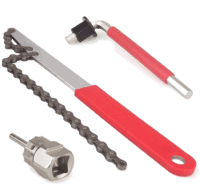 | Cassette Installation/Removal Tools | Amazon | There are *many* variations of cassette removal tools, this is the best bang for your buck. Don't overthink this. You'll likely only use this tool once every 2-3 years. |
 | Front Wheel Riser Block | Amazon | Here's the thing, some people like front wheel blocks, some don't. I'm one of the ones that do. I like my front wheel to stay put and not aimlessly wiggle around. For $8, this solves that problem. Note some trainers do come with them. Also note, I use a riser block with *every* trainer. |
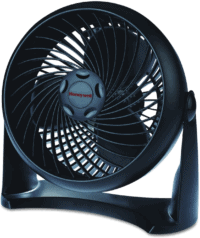 | Honeywell HT-900 Fan | Amazon | I've got three of these $12 fans floating around the DCR Cave, and I frequently use them on rides. They work just fine. Sure, they're not as powerful as a Wahoo Headwind, but I could literally buy 20 of them for the same price. |
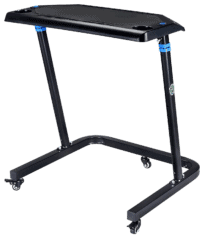 | Indoor Cycle Trainer Desk (RAD/CXWXC/Vinsetto/Conquer/etc...) | Amazon | This desk is both a knock-off of the original KICKR Desk, but yet also better than it. First, it's got wheel locks (so the darn thing stays put), and second, it has two water bottle holders (also useful for putting other things like remotes). I've been using it as my main trainer desk for a long time now and love it. Cheaper is better apparently. Note: Branding varies by country, exact same desk. |
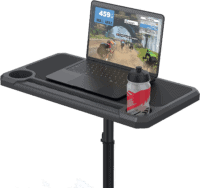 | KOM Cycling Trainer Desk | Amazon | This is by far the best value in trainer desks, at only $59, but with most of the features of the higher end features. It's got multi-tier tablet slots, water bottle holders, non-stick surface, adjustable height and more. I'm loving it! |
 | Lasko High Velocity Pro-Performance Fan (U15617) | Amazon | One of the most popular trainer fans out there, rivaling the Wahoo Headwind fan in strength but at a fraction of the price. It doesn't have smartphone/ANT+/Bluetooth integration, but it does have secondary outlets. I've been using it, and a similiar European version lately with great success (exact EU variant I use is automatically linked at left). |
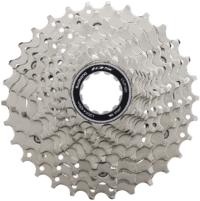 | Shimano R7000 105 Cassette (11-speed) | Amazon | This is a Shimano 105 cassette (thus, slightly more budget compared to the Ultegra), in most cases, you probably won't notice the difference. Ensure that the number of speeds matches your bike (e.g. 11-speed, 10-speed, 9-speed, etc...). |
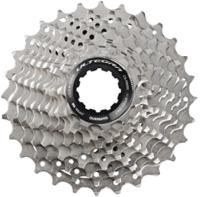 | Shimano R8000 Ultegra Cassette (11-speed) | Amazon | This is a Ultegra cassette, you can save about $10-$15 by picking up a Shimano 105 instead. Ensure that the number of speeds matches your bike (e.g. 11-speed, 10-speed, 9-speed, etc...). |
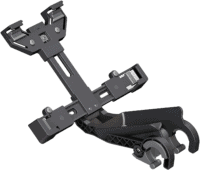 | Tacx Tablet Bike Mount | Amazon | I've had this for years, and use it in places where I don't have a big screen or desk, but just an iPad or tablet on my road bike bars. |
Thanks for reading!

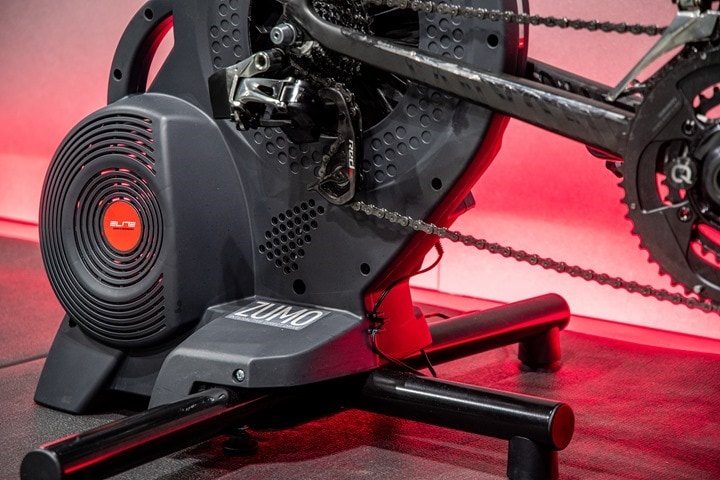
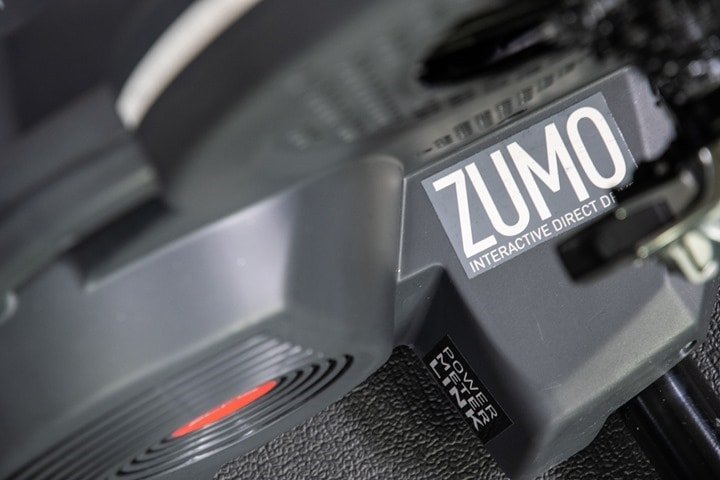
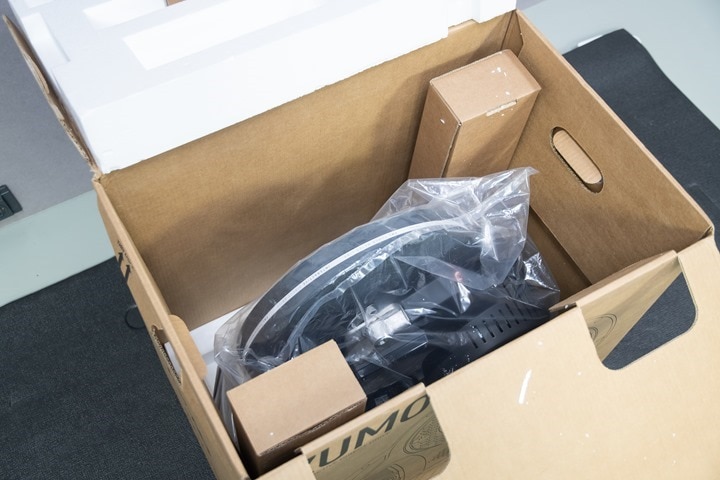
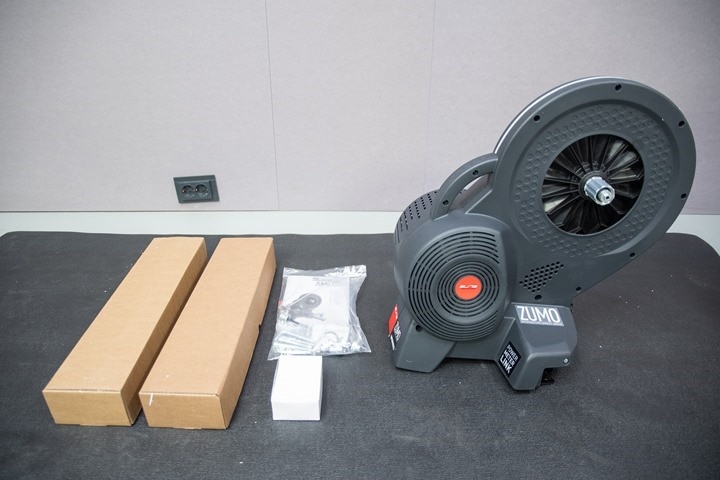
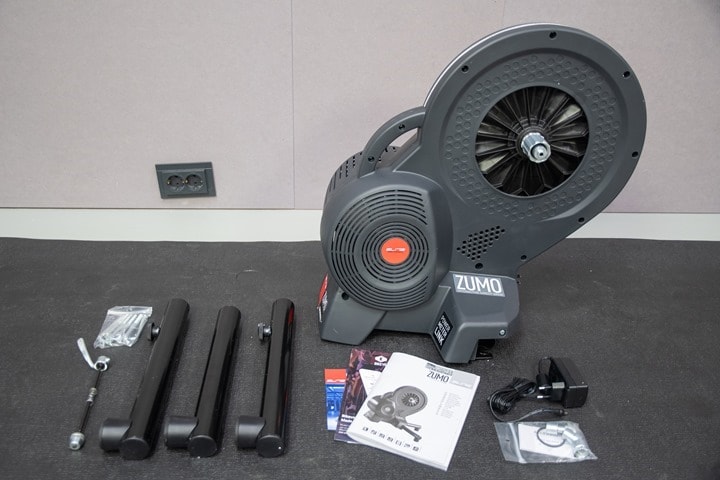
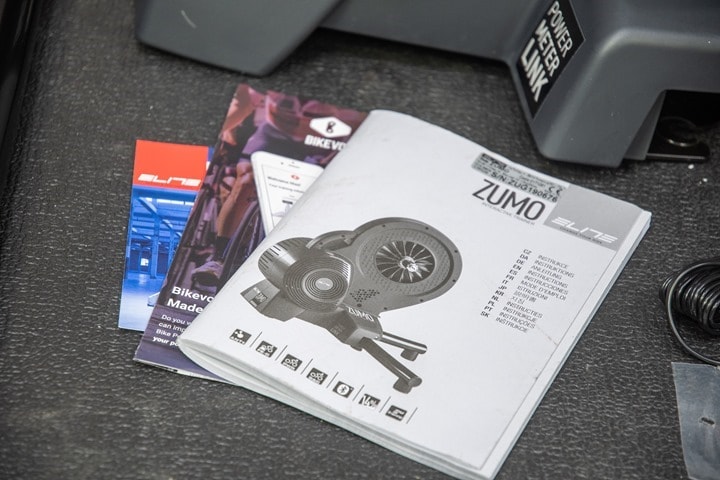

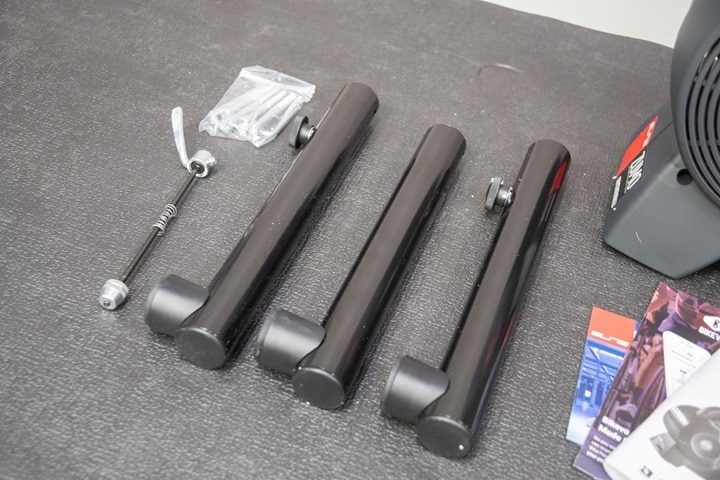
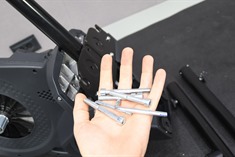
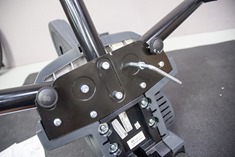
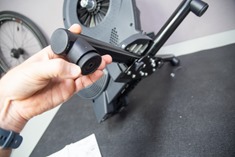

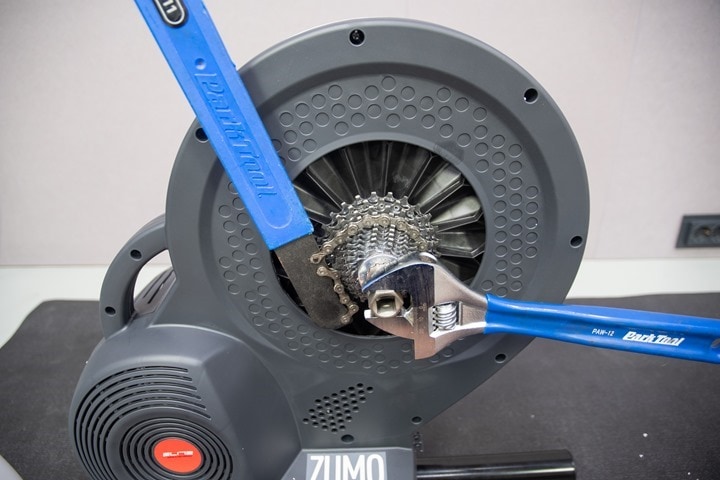
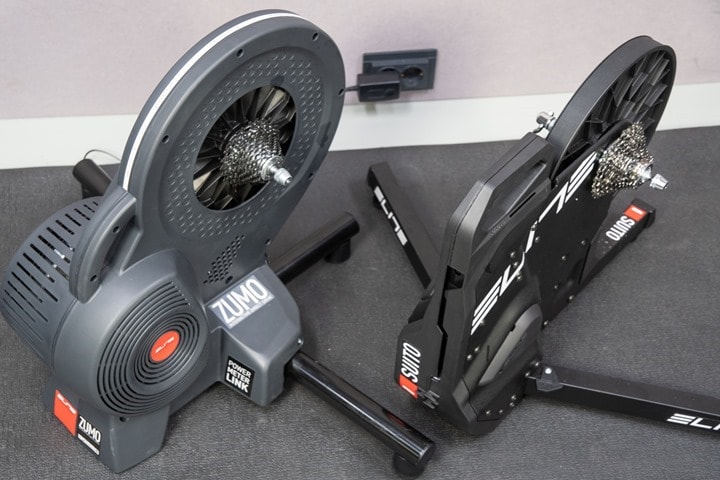
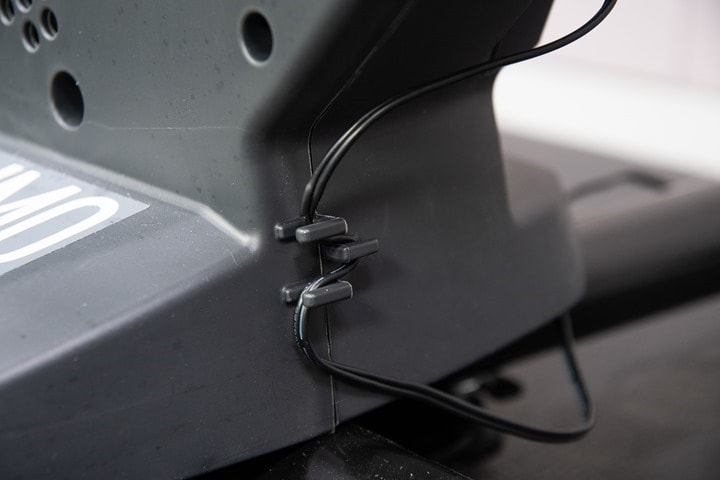
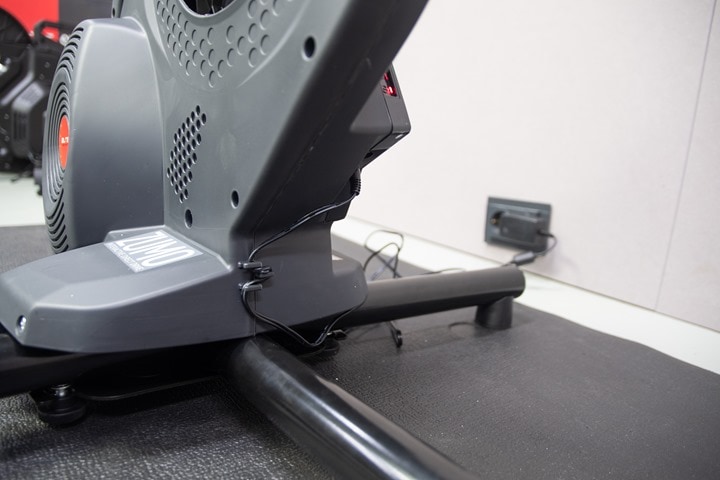
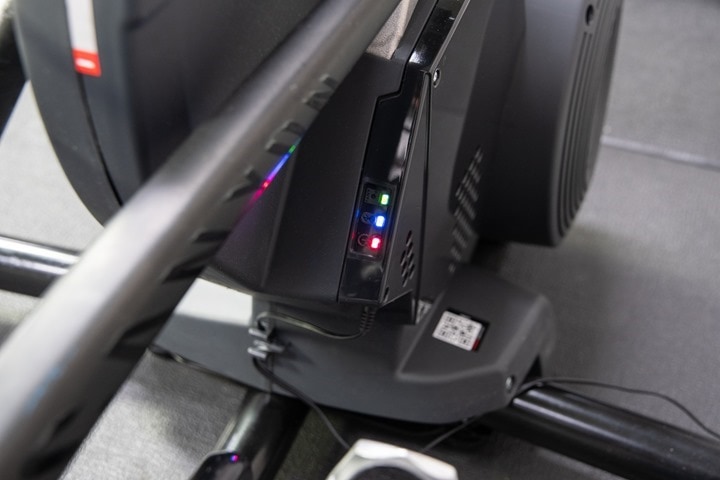
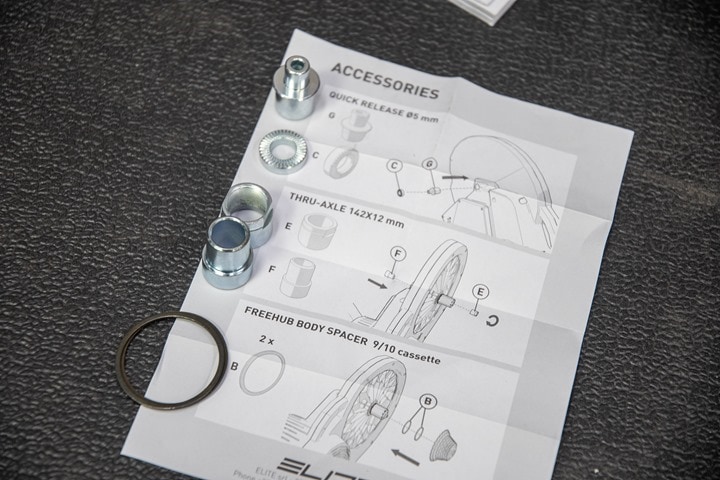

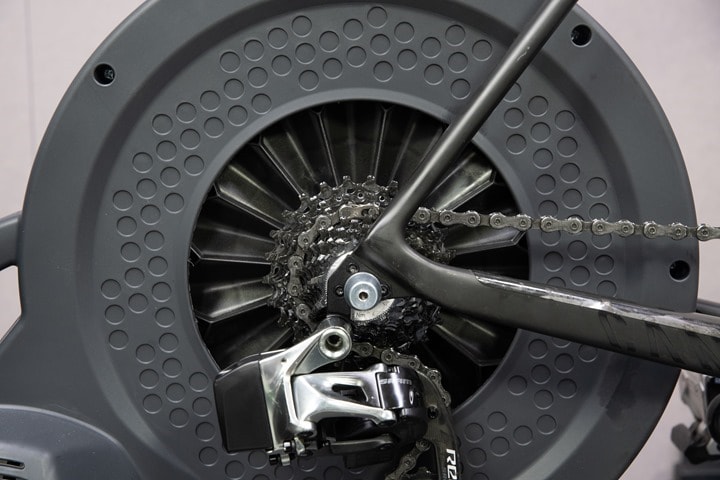


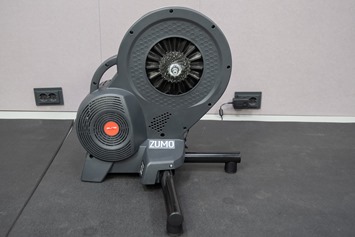
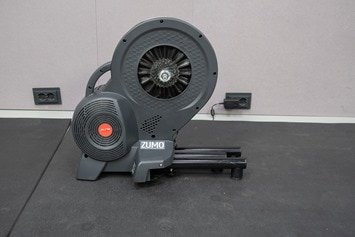
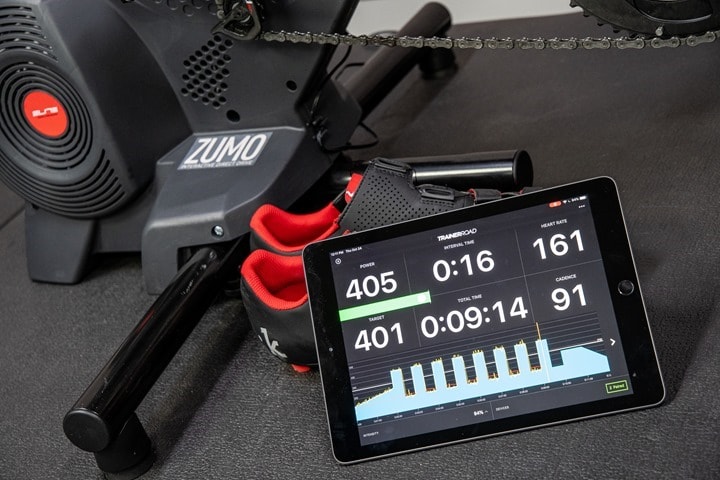
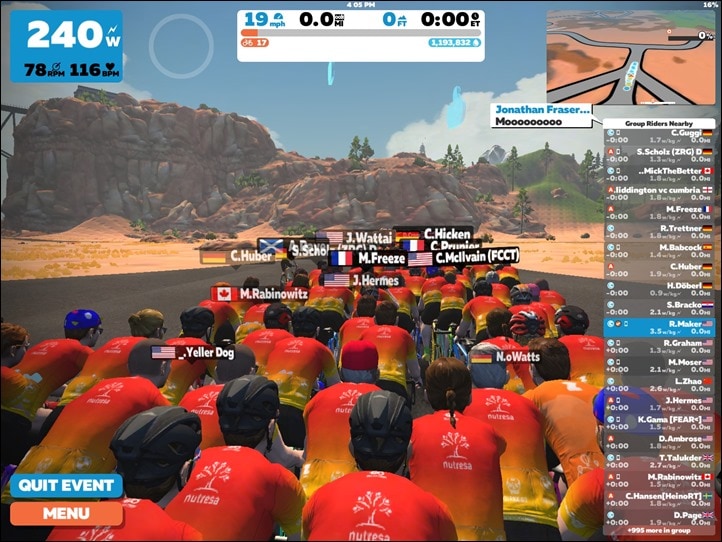
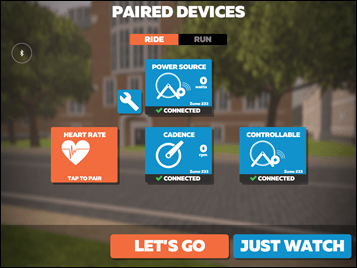
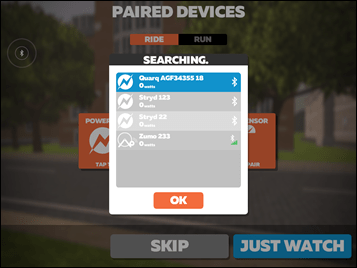
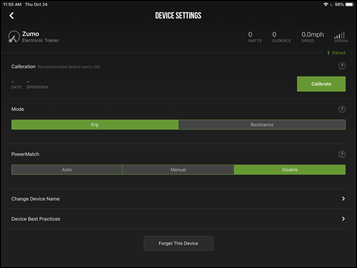


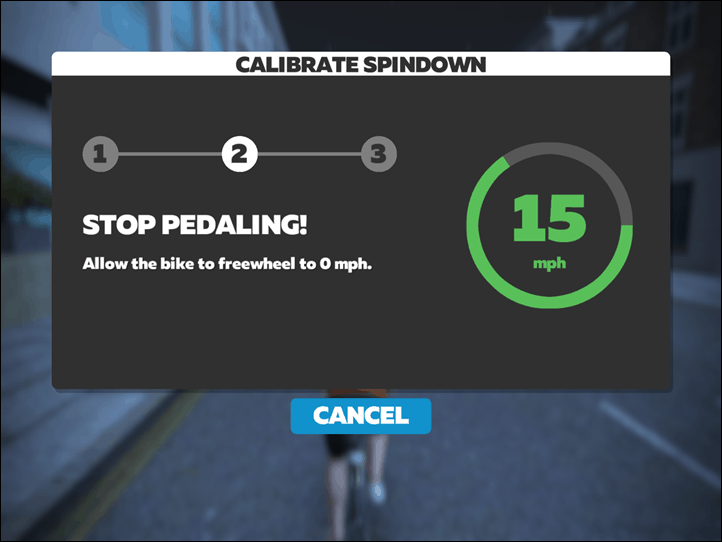
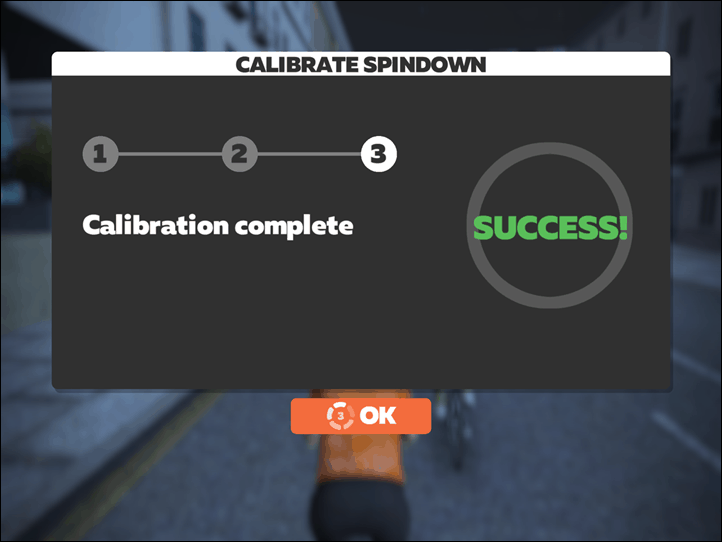
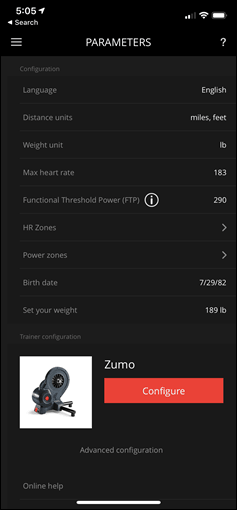
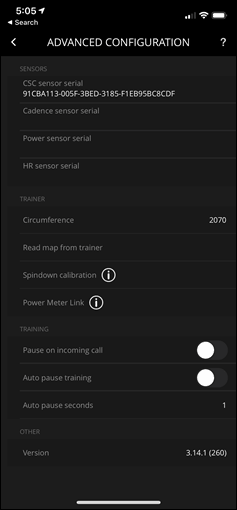


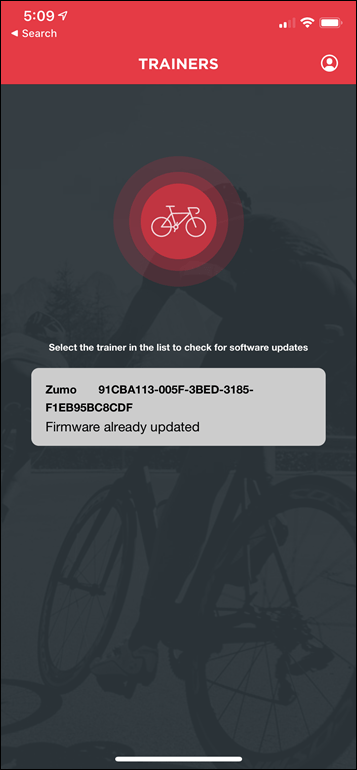
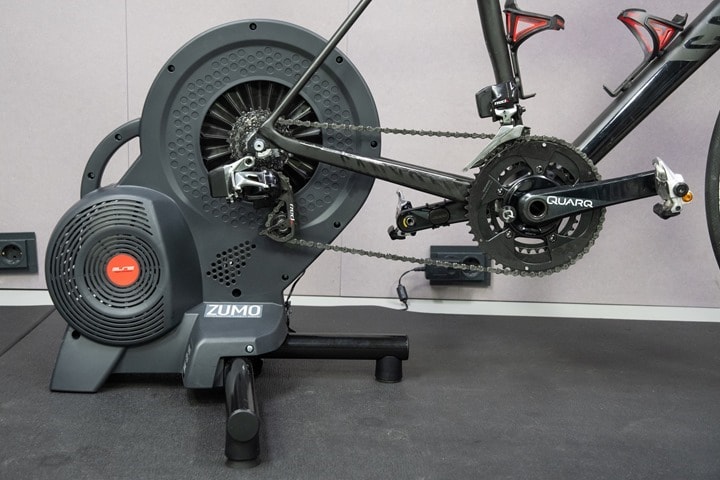
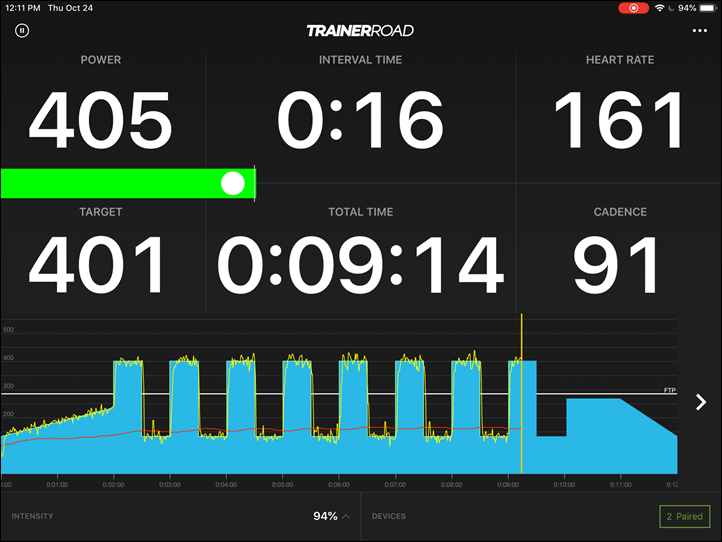





































I’m detecting some edgier comments. Are your posts getting snarkier?
It happens at 1:20AM. And there wasn’t even wine involved this time either. Shame.
Roflmao!
For the record, I think wine should always be involved.
Looks like Styrofoam blocks on top and bottom. How does The Netherlands deal with recycling that nuisance?
Which smart trainers are packaged eco-friendly besides Saris and 4iiii? (cardboard plus a couple plastic bags)
Who is the worst offender? ;-)
Not sure, I just ship the whole thing back to Elite. My version of recycling. :)
I don’t understand the market positioning of this trainer. Why would anyone drop $699 + cassette for a trainer less capable than one from the same manufacturer that performs better at $799 – with the cassette? Is this the ‘protection’ for the Suito? When prices drop, they drop the Zumo price but hold the Suito price steady? The cost to Elite for two SKUs, splitting the manufacturing, warehousing, distribution…something is not clear here. In any case, as they say on Shark Tank, for these reasons, I’m out.
That’s already happening. In the UK Halfords are selling the Zumo right now at £399 which is an amazing price, especially when you factor in the 10% British Cycling members will also get.
On Amazon (US) the Direto 2 is $799…Elite is flooding the mid-market…push them out and see what sticks.
Cracking price, paid the same for Tacx Flux last year.
You have to print off voucher now on British Cycling for the discount.
Fantastic review, very informative…
I bought one in the UK on Sunday but it is faulty – appears to be stuck on maximum resistance. I heard back from Elite’s technical suport yesterday and they are trying to resolve the issues but no luck yet.
Hearing that the price has dropped a further £30 in the 2 days since I bought it has made my mind up. I am going to return it for a refund.
So the maximum resistance thing is something someone else had as well. I briefly had that issue, and I actually think it’s a Zwift issue, not an Elite one (assuming your issue is the same as mine).
When I went to calibrate in Zwift (specifically Zwift), it didn’t re-send a new (non-calibration) command after calibrate, so it hung out at a state that I basically has to push 400w on. However, once it got to the next portion of the workout where a new interval was specified, then life was fine.
For fun, try opening up the Elite app and just setting a resistance level of 50w or 100w and see if that kicks it back. Sorta like the old days of hitting the TV on the side of the head.
With the iOS app I can change the resistance from 1-16; 1 is about the equivalent of 9 on my dumb trainer and 16 is slightly more. I can now ride in the 34/28 gear at 85RPM for 200W+ (for context I would usually use this gear and wattage to ride easily up at 15% incline).
This has improved since the first time I tried it, initially it required 400w+ in this gear combination. I put this improvement down to attempting a spin down calibration; unfortunately I was not able to ride for 10 minutes+ prior to performing that calibration because I cannot sustain 400w for 10 minutes. My understanding is that with the lowest level of resistance I should be able to spin freely (in my lowest gear)
Yesterday Elite sent me an email asking me to take the cover off and film the motor performing its BIST start-up routine – I can confirm that the motor does move through fully out then back in.
My feeling is that if the unit was properly calibrated it probably would work.
Isnt that strange that zumo is now a year older & halfords are selling it for £479! so £80 more than before.
Hey Mark, how did it end up? I have the same issue. Mine was fine but one day it just kicked in full resistance. However it does work on erg mode
Ray, not sure what your criteria is for the ‘Availability’ section of the comparison, but it’s also available in the UK (at an amazing price, too!). link to halfords.com
That’s certainly a good deal, with the Suito and Diretto both at £550 in Halfords at the moment it’s a good value proposition. The original Drivo 1 is also at £589 so all very close.
Ray, is there likely to be a full review on the Suito soon or are production issues still plaguing it. I still can’t make up my mind and really it’s potentially this as a toe in the water (which is probably the right choice) or a Kickr core as an ‘all in jump in and get wet and resell later if I don’t use it’
Very soon. I this morning got a full run-down of all the production issues they’ve had, an exact list, and the exact dates each fix went into implementation. It was that piece of the puzzle I was mainly waiting on.
The actual testing pieces are all done for me. I think I even took all the photos already too.
That’s great Ray.
If the issues are more hardware related is there an easy way to find out if you have a newer version based on something like serial numbers. As there are still drivo 1 trainers out there I suspect it may take a while to flush through stock. Also is there any way that Clever Training UK will carry these trainers, would be great to ‘pay back’ to the site.
It’s a blend. Some were hardware fixes, some where software fixes, and some were actually app fixes (where when connecting to an un-updated Elite app and hitting certain settings you could effectively temporarily sabotage your trainer). Various dates, no specific series numbers I’m aware of.
For example, the app fixes went into place Oct 20th – but that assumes people actually have the most recent app installed. If you’re like my wife, there’s virtually no chance of that.
Whereas some hardware fixes went in place in early October for the flywheel, but that also can take time to work its way through distribution.
Be careful if you do buy an Elite trainer from Clever Training(US at least). I just found out last night that the Elite Suito I ordered from them last Friday on the discount that I cannot return because it’s a lemon(horrible flywheel wobble and clanking when under load), I have to go through Elite directly. CT told me that on all Elite trainers they don’t accept returns if defective, they are instructed to tell the customer to deal directly with Elite. So now I have to jump through the hoops to get someone at Elite to respond back. I am not sure if this is a standard practice with trainers given it’s my 1st purchase, but disappointing to say the least.
ELITE: Hi Jason, you are in contact with Nick @ Todson our US office and Andrea here at our HQ in Italy. Rest assure we will take care of you. Apologies you’ve had an issue with one of our trainers but both the Todson and Elite teams will follow your issue quickly and effectively. Thanks for your support. Peter.
Thanks Crazycanuck67, that was fast! I just wanted to make sure people know you can’t return it to CT if there is an issue is all. Having had to go direct through manufacturers for warranty issues in the past with various items I was not expecting someone to actually get back to me this fast. As long as it gets resolved I’ll be a happy camper.
Hi Jason-
Your comment got me curious – as I’ve never heard of this policy before. Sure enough, it’s new. At first as I was a bit annoyed, but now that I circled with CT and got some details. Essentially, the only part of this change is that instead of shipping the return to CT, you ship it to the distributor directly (Todson). CT will refunds you/etc as you wish if you want to return it.
The reason is simple: It saves money (and the environment). As you might imagine, if you ship a return directly back to Clever Training, the only thing they do with a returned trainer is ship it in turn back to the distributor (the exact same place you would have shipped it). Unfortunately, unlike a watch, the cost to ship a trainer is high (both financially, and of course size wise so the CO2 impact is larger).
It sounds like other companies will be doing this too shortly. Like I said above, I think this actually makes sense. And as long as it’s executed cleanly and quickly (there might be a few things to tweak in the communications here still, but it’s a very new policy), I’m totally down for avoiding unnecessary spend/shipping/etc.
Hope this helps (and thanks for the support via CT!).
volume.
I am probably being daft but how loud is it ?
Cant see it on the reivew or on the comparison table ?
Good point, my mind blanked there. It’s basically same as Direto – fairly quiet but not silent. I’ll add in a quick video.
Every time I read a direct-drive trainer review I wonder how many people own a direct-drive trainer but not a chain whip and lockring tool.
My guess is N-1, where each time someone buys a new direct drive trainer, they end up buying the tools to use approximately once. Sigh.
I was wondering the same. I don’t own any direct drive trainers (yet, hopefully that changes this winter), but I have two sets of the tools, one in Switzerland, one at my parent’s place … also plenty of cassettes around, slightly used or new. Maybe we are observing a development as in rock climbing, wherein more and more people pick up indoor cycling (as has happened with climbing) without having cycled outdoors for several seasons before.
While this might be a fair statement, i know i don’t have all the tools needed for maintenance because i like to take it to LBS. I feel guilty buying everything else online where i can get a good deal, but still want to support them where i can.
I am looking to get a direct drive to replace my old wheel on and getting the chain whip is an added (while not great) cost i am fine adding.
Do yourself a favor and skip the chain whip and get a vise whip instead.
link to pedros.com
Brill thanks.
could volume go into the trainer comparison tool please :)
Have you experienced any issues within zwift when you stop pedaling with power and cadence taking a long time to zero out?
Something to keep in mind, the cassette included with the Suito isn’t necessarily added value for everyone. If you already have a spare cassette, or have a preference for a different cluster, it’s redundant at best.
I usually put an old cassette from my wheel onto the trainer and use it as an excuse to upgrade the one on the wheel! i guess it is the direct drive equivalent of putting old tyres on your turbo wheel and upgrading the outside wheel!
Just picked one up at Halfords today for £359 (with British Cycling discount) Happy days?
Then I set it up and discovered it doesn’t like medium length derailleurs..I was rushing to grab the deal and never thought to check.
That’s good to know, I was going to go and sort one tomorrow but both bikes I was going to use have medium cage. Does the cage catch on the leg like the original Tacx Flux? I haven’t been able to find any further information online.
Odd…I’m using it with a long length derailleur.
Ray, are you able to confirm what you tested with? My friend is looking to get one while the price is so good, but has the Ultegra GS derailleur. I hope it’s going to fit!
1×12 sram
ELITE: We confirm that Zumo is compatible with most bikes on the market regardless the type of rear hub (adaptors available ie Boost 148x12mm or 135×10/12mm and freehubs ie Campag and Sram XD/XDR) and derailleur cage size (short/medium/long including MTB). Contact myetraining@elite-it.com if you have any questions regarding your set-up.
Brilliant, thanks for sharing that Peter. ??
Thanks for that. I’ve realised my problem must be chain length in lower gears, so removing a link should pull the longer derailleur away from the casing and sort things out. Cheers.
Did you resolve your issue Brian?
I’m experiencing the exact same issue and initially thought it was because of my medium cage.
Chain Tension is my second thought.
How’s the low-speed high wattage simulation?
Ray, the point about undercutting power and therefore not recommending for Zwift racing……would that be negated if the user was to use a power meter (4iiii crank in my case) to measure and transmit power?
I was initially looking at getting a KICKR core but, as mentioned in other comments, there are some really good deals for this trainer in the UK + I have a reliable power meter + spare cassettes + all the tools.
AIUI only a few trainers can connect to a power meter and use it to control resistance. Would be good to know if the Zumo is one (but I doubt it).
ELITE: This might not be exactly the answer you were looking for but FYI Zumo has a feature called PML (Power Meter Link) which allows your power meter to be the power source. Peter.
if you use the power meter link and connect the trainer to zwift does it send the power meter data to zwift or the power from the trainer’s power meter?
does that make sense?
I got one (also in the sale) the other day and fail to see what it was catching on? there is a huge gap between my rear mach and the trainer. I am using a short cage but it would have to be a massive difference to affect things!
Hello there
I am looking at the £359 zumo (Halfords with bc discount). Is there any way of telling the newer models from the old ‘buggy’ ones?
Hope it will be a big upgrade from my turbo muin
I have been looking for this info also, I think the only way to get the info is by checking/updating the firmware, Zumo owners with issues have hardware revision 1 GPLama tested a trainer that had hardware revision 3 this unit worked perfect. Go about 5:30 into the video link to youtube.com
I don’t want to buy one and then find is hardware revision 1 or 2
ELITE: We shipped out a handful back in June 2018 to only one client (Performance in the USA) then reassumed shipments July 2019 which are the same units DCRay and Shane received, tested and reviewed. Those that bought the first units from Perofmance are clearly taken care of if they have any issues even if Performance has bankrupted in the meantime (contact: myetraining@elite-it.com) . Bear in mind when Performance went into bankruptcy, they had already sold all their Zumo trainers. So definitely the Zumo trainers currently on the market are all manufactured from July 2019 onwards.
Last but not least, we wish to make clear Zumo is a current model offered to selected partners around the world.
We are manufacturing with pride Zumo trainers as we speak here in Italy together with our other models like Drivo II, Direto X, Suito, etc. Same production lines, same materials, same QC procedures.
It is our priority to continuously improve our trainers with firmware updates to offer the best experience to our customers and Zumo gets the same attention as the other trainers currently in our range.
Peter
I seem to remember that in last year’s trainer recommendations, the trainer would allow you to use the Zumo for speed/cadence, but you could use a third party powermeter (say, a crank-based unit) for the power. Is that still the case?
(sorry, a bit of a newb with direct drive trainers, but I think your ‘APP COMPATIBILITY:’ suggests that under ANT+ Speed/Cadence Profile?)
Thanks
ELITE: Yes, it’s the PML feature (POWER METER LINK). Peter.
Thanks
Went out and bough tone this morning, paid £359 so a real bargain. I’ve never had a smart trainer before and bought it for my TrainerRoad work, especially the longer sessions like today, 6 x 15 sweetspot. I’ve always been guilty of doing my turbo work at low cadences (75 to 80 avg usually) but from what I’ve read I know this is risky on a smart trainer so today’s session averaged at 90rpm. When I race I do 10 mile TTs, no Zwift, no road races, so this is going to make my indoor work far more enjoyable. Get the TV on, watch some DC and GPLama videos etc and just get the work done.
Have you ever done (or are aware of) an explanation of the difference in perceived gradient as a function of how heavy you are? You’ve mentioned on a few occasions how the various max gradients are defined for a rider of a standard weight (usually 70 kg or so). How does the same 8% hill on Zwift feel to a rider who is above/at/below that 70 kg mark? As someone who’s firmly entrenched in the Clydesdale category and about to upgrade to my first direct drive smart trainer (leaning towards the H3), this is a topic I’m curious about.
If you’ve already done this and I’ve just missed it – apologies!
Hey anyone with some experience know if the Wahoo Kickr Snap ( 399€ ) at Bol.com vs the Halfords deal ( £399 ) Zumo is the better purchase. All the reading and Youtubing in the world has me completely confused. I basically have up to 450€ and want the best trainer i can get for this. Would greatly appreciate some wisdom. I’m in the Netherlands but can ask a mate to buy from Halfords UK side if need be.
Hi,
The major difference between the Snap and the Zumo is that the Snap is a wheel on trainer. Wheel on trainers tend to be noisier than direct drive machines and can suffer from wheel slip during large accelerations (which can be annoying). But as you don’t have to remove the rear wheel to mount the bike on the trainer this can be done quickly and without any risk of getting chain lube on your fingers,(I aways end up grabbing the deraillier cage at some stage) so can be a good option if you only have one bike and have to clear away every time you use the trainer. If you don’t mind the noise and don’t have a big sprint then the downsides of a wheel on trainer are not so significant. I have a winter and a summer bike and have the winter bike on the trainer in the summer and vise-versa.
Both trainer types work quite well and which ever you choose I’m sure you’ll enjoy the whole sensation of trainer control is a real game changer from doing the “just riding along” aspects of zwift to a hard training session in ERG mode even the cheapest smart trainer is much better than the old dumb (or classic) trainers.
Thanks Richard, I am pretty aware of the differences between the actual types of these two trainers i guess i am more wondering which trainer is going to be the more realistic and enjoyable and that i won’t be looking to upgrade in 12 months. I could also go lower of course ( tacx flow for 100€ ) but i think i will quickly get annoyed by the noise, poor road feel and lack of accuracy. I really appreciate the work of DC Rainmaker and GPlama but i still don’t feel i know what i should be buying. If my question is too broad then i apologise.
I have had the Kickr Snap for 4 years it has never let me down, It works great with Zwift, TR and Sufferfest, I’m waiting on my Saris H3 to be delivered I did consider the Zumo but I thought it wouldn’t be an upgrade to the Snap more of a sideways step, The Snap is a solid unit the Zumo to me looks cheaply made, If I were you I would go with the Snap because you had an issue with the Zumo you would need to send it back to the UK.
One thing to note with the Snap I do have a extra rear wheel with a turbo tyre fitted so as not to use my good rear wheel/tyre this could be an extra cost that you would need to consider.
Thanks for all the feedback guys, missed the Snap black Friday deal whilst messing around asking for opinions so looks like its the zumo for me!
The other main advantage of direct drive trainers is that they tend to be more consistent over wheel-on trainers when it comes to accuracy. With wheel-on trainers you need to ensure the tire pressure either remains the same, or you need to calibrate it on every ride after 10-15 mins. And most wheel-on trainers do require about 10-15 mins of warming up (riding) until accuracy comes back in-line.
As noted though, taking on/off a bike means you’ll undoubtedly manage to get grease on your finger(s) more often that is logical.
No grease on my bike! Clean as a whistle! Thanks for response! Ended up getting a Tacx Flux S on sale 497€ As the Zumo I noticed is. It even on the Elite site, plus with shipping from London plus the exchange rate its no cheaper really. Not sure if I peaked to soon as the Kickr core reconditioned is now 540€ but hey I’m sure I got a good trainer for a pretty good price that I will really enjoy! Looking forward to give back to the community and go on some of those famous Zwift group rides!
Hi Ray,
Not sure you are aware of it, and it might not be the best place to say this, but when you say your Powertap P2 read low, I noticed this too and did one experiment. I did connect my P1 over bluetooth with TrainerRoad on my Android phone, and over ANT+ with my Wahoo Elemnt Bolt. Guess what : 10W difference between the two. So TR is getting lower readings than the Bolt, surprising isn’t it ?
Also, if you do TR workouts with single leg drills, perhaps you will see that TR only uses the left pedal to read power. So if you have some imbalance you may well be stronger with your right leg. Frankly this is annoying, because when you switch legs the workout gets paused all the time. Power stays at 0 for the right leg, and since it detects cadence isn’t 0 it resumes the workout, and for the left leg resistance goes through the roof and you end up with twice the normal wattage, resulting in a sawtooth pattern. Not sure if dual sided power meters all exhibit this behaviour over bluetooth.
Anyway, thanks for that review, I’m still on the fence when it comes to direct drive smart trainers, it would allow me to do force drills on them, which is the single thing that causes tire slippage for me, and I would have to be able to sell my wheel-on trainer second hand, which I’m not sure is quite easy. While I can still train a heck of a lot with what I have. Decisions, decisions :)
How does the trainer noise level of these compare to something like the Tacx Flux S and other similarly priced models?
I picked up a Zumo a few days ago, and I’m not altogether sure whether or not I’ve got a faulty one. I’m unable to shift in to the lowest gear on the cassette. The derailleur hits against the flywheel body. My bike is a quick release equipped 2020 Trek Emonda SL5.
Experiencing the same problem. 11 speed 11-32T cassette, di2.
I think the issue is down to the derailleur cage length, 6870 di2 comes in two lengths, SS GS
There probably isn’t a solution for this, other than not using the lowest gear.
I know from previous turbos, this has been an issue, tacx flux in particular.
Hi Justin, would you mind sending us a photo of your set up so our team can understand the situation? Please send to myetraining@elite-it.com FAO Alessandro Farronato. Thank you.
Peter
Can you confirm then that the turbo supports long cages?
ELITE: We confirm that Zumo is compatible with most bikes on the market regardless the type of rear hub (adaptors available ie Boost 148x12mm or 135×10/12mm and freehubs ie Campag and Sram XD/XDR) and derailleur cage size (short/medium/long including MTB). Contact myetraining@elite-it.com if you have any questions regarding your set-up. Thank you. Peter.
This has been sorted. I’m not afraid to admit that it was user error. I’d built the trainer incorrectly and it turns out I was using a mixture if quick release and through axle components. While I freely admit that I’m not the most technically minded person, I do feel that the manual could have been clearer.
Wish this was the case for mine too.
Unfortunately my rear derailleur is still rubbing on the flywheel plastic guard.
The plastic guard doesn’t spear to be flush with the flywheel below the cassette, it’s this looseness which I believe is the issue with mine.
As for adapters, I’m using regular quick release with the 5mm space inside the drop out.
ELITE: Tks Justin for valuable input. I’ve asked the team to review the manual. Stay tuned. Grazie. Peter.
ELITE:
Hi D Rock, we want to fix this. Please could you send a photo to myetraining@elite-it.com with your situation and we’ll have the team look at it. Grazie. Peter.
Did you resolve this? The plastic rubs the flywheel for me also.
Hi, I’m a cyclist of many years but a total novice as far as indoor trainers are concerned. If I get a Zumo can I train without having to subscribe to Zwift etc? Can I get a readout on my Garmin 200 or some free software on a laptop? I’d like to measure/compare my training efforts but not I’m worried about total accuracy. Just looking for a reliable and fairly quiet trainer for winter use. Thanks.
ELITE: With Zumo you get 12 months free to our myETraining app that includes training programs, RLV (Real Live Video) courses, and access to Pedal Analysis (one time in-app purchase). Peter.
I’ve just set up my Zumo. Every time I try to calibrate I get ‘calbration timed out’ and ‘failed’ in red letters. I must have tried four or five times – all after pedalling for more than 10 minutes. The freewheeling stops but the speed still registers, although dropping, for a while too. I calibrated successfully on the Eilte app but don’t know if the resistance will work properly on Zwift if I can’t calibrate in the app. Any advice DC Rain Maker or anyone else for that matter?
I’ve got this issue too. I eventually managed to get it to work in the Elite app, but it fails every time in TrainerRoad. The first time I tried in TR it started setting weird power levels immediately afterwards but seemed to reset when I closed the app.
Zwift support helpfully told me that the reason was my make and model isn’t compatible with their calibration process.
I pointed them to this review showing Zwift calibrating successfully with the Zumo.
They came back and said it must be a problem with Elite and its firmware.
I pointed out that I’d updated all the firmware and calibration worked with Elite so the problem isn’t with their kit.
Not heard back yet. Wondering if anyone can help?!
Strange that it worked for @DC Rainmaker ?
I’m really tempted to get on of these in the UK from halfords (they are the exclusive stockists apparently) during their black Friday event but would like to be able to calibrate it!
I’d be using it with powermatch (one way or the other) with a pair of power meter pedals to I’d like to know what that would do to the reaction time using ERG mode. If its already on the slow side then I dont want to make it worse.
There are diffferent Zumo firmware versions – are you sure you’re on the latest?
Fairly! But then you’re asking someone who took a fair few minutes longer to fit the legs than suggested in your review! It calibrated in the Elite and Rouvy apps but not Zwift. Maybe I’ll try in the little ring next.
Check out the Elite Upgrado app to ensure you’re all good to go!
Yep, did that before I got in touch with Zwift, who keep telling me that my trainer isn’t compatible with their calibration – until I point them to your review that is! Then they say ‘oops, so it is – go talk to Elite’.
ELITE: We are meeting Zwift tomorrow and this is one of topics of discussion. Calibration in their app which isn’t consistant across the Elite range. While obviously it’s available via our myetraining app which then is saved in the trainer and valid for third party software apps. Tks. Peter
Good luck to them. While they’re there they might like to tell Zwift to stop telling people their Zumo trainer can’t be calibrated in their world.
ELITE: calibration available via the Elite myetraining app. Tks. Peter.
Looks like the zwift spindown was bricking trainers at one point so you might have got off lightly
link to forums.zwift.com
Has anyone tried to use the Zumo with Zwift linking via Bluetooth to the android app? I have purchased a Zumo for zwift racing but the resistance on the flats is so low I can barely get over 200W before I spin out in the 53:11 making it useless. Erg mode works fine, power numbers are as expected (for the resistance) and using the Elite App it performs all their functions fine. I have checked the firmware callibration and its all up to date. What setup were you using Ray? Ant+ or BT and apple?
ELITE: Hi Craig, what’s the Difficulty Level at? Make sure it’s not set at 0%. Tks, Peter.
I’ll try this tonight…
Same problem for me, did you find solution? I have tried different difficulty levels in Zwift with no luck. Seems to be a communication bug between zwift and trainer
ELITE: Hi Stener, as advised to Craig, make sure the difficulty level isn’t set at 0%. Tks, Peter.
The only solution I came up with was to use a laptop and ANT+ dongle. With that it works fine albeit I would still suggest i am one or 2 gears lower down the cassette than I would be on the road (also noted by GP Lama in his review of the Zumo). With the android app, the base resistance for the trainer is just set way too low. The only setting you can change in zwift is the resistance when climbing, it doesn’t make any difference on the flat. Zwift could do with adding a slider so you can alter the base resistance leve yourself, akin to changing the gearing on your bike.
Hi Ray, are you adamant you can calibrate through TrainerRoad as I get a message saying this is not possible.
Thanks
Neil.
Which connectivity type?
Ant+ dongle.
Has anyone had problems with a squeking Elite Zumo when pedalling? If so, is it easy to fix (anything beyond the most basic will be beyond me!) or is it a bigger issue? It’s really annoying and while it’s a budget direct drive trainer it shouldn’t make that noise! Thanks.
ELITE: Dear Kevin, could you please send a short vid to myetraining@elite-it.com FAO Giada Ganeo and our team will diagnose your issue asap. Thank you. Peter.
Hi Kevin,
The axel on mine was lose causing the freehub body to move. It didn’t cause any squeaking but might be worth a check. It just requires an alan key in the end of the axel.
Thanks Craig. I will take a look at that. I sprayed some WD40 around and it really improved things
Does the Elite Zumo (or the Elite Suito) come with a freehub adapter to use a Campy cassette (or is a freehub available?). Couldn’t find one in the Elite website. Thank you.
ELITE: Dear Ernesto, we offer a Campy freehub.
link to elite-it.com
Thank you. Peter.
Peter,
Thank you. Is it available online. I live in Ventura County, California. Also, how much does it cost? Thank you.
ELITE:
Ciao Ernesto, you can start from here:
link to todson.com
The description needs to be updated, it’s the same one as on the Elite site.Tks, Peter.
Peter, grazie mille.
Peter, one quick question. Do I need to use a Campy freehub especially designed for the Elite trainer? I have a couple of Campy 11 speed hubs in my spare parts bin. I bought them for my Fulcrum Racing Zero wheels and they are just sitting around. What do you think? I am always up for saving a few liras…oops we don’t use liras anymore. ? Grazie.
I meant to write freehub bodies, sorry it is late.
ELITE: Ciao Ernesto, the Campagnolo compatible freehub body we use on our direct drive trainers is a special version made by Miche and has bearings with hole diameter 17mm. So if the ones you have follow these dimension then ok otherwise I’m afraid you’ll need to purchase one. Thank you. Peter
Buongiorno Peter. I will go ahead and order the Elite specific freehub body. It is a little pricey, but then again any Campy-related is going to be pricey. I guess that’s the cost of admission into the Campy Club. ?
For £60 more than the price of the Elite Zumo, I can buy the Elite drivo direct drive; both from Halfords & both with the same warranty. What would be your recommendation?
Thanks
Kevin
That’s tricky. If it were Drivo 2, I’d say yeah. But Drivo 1 less so. It’s a great trainer, but it’s also a beast of a trainer. Like, semi-truck style.
I’d probably be tempted for Direto, which I believe that Halfords had as well (at least last night) for the same price bucket.
Bought a new Zumo and having a nightmare at the moment with resistance and speed settings. It seems the Wahoo Elemnt is somehow sending an FEC signal and messing up all the Zumo internals after changing the wheel circumference in the Wahoo app. Anyone else had a similar issue and got to a fix?
Dear Kevin,
I spoke with out CS … here is what they tell me …
“Yes The Bolt “writes” the circumference on the trainer (it is in the properties of ANT+ FEC to be able to do it). If the Bolt has therefore set an incorrect circumference the trainer also has an incorrect circumference and consequently goes to calculate an incorrect speed. This has repercussions in both ERG and simulation mode with an incorrect resistance (due to the incorrect speed).
If the customer has the possibility to start a training with our app myETraining (MET) via ANT+ (even just for a few seconds), MET “writes” the correct circumference (2070 or the most correct according to the customer’s bike) and everything is sorted.”
Please tray this and advise if your issue is sorted.
Ride On!
Peter
Hi Peter
Thanks for getting back. I had tried changing values back in the app and had no success. Due to the expected “lockdown” I took it back and replaced it. Made it in time!
The new Zumo I just haven’t connected to the Bolt. I get the same power numbers off the trainer as my Assioma pedals. I have used it with Zwift and RGT and all works well in FEC mode.
The only issue I still see is the speed in the MET app is always too high (I have calibrated) and a sent a mail to customer service but not heard back yet. As it works in the apps I use, and the power number is good, I’m not too bothered was just interested to resolve it.
Hi Kevin,
Andrea with CS will contact you to fix.
Tks,
Peter
I am experiencing the exact same problem with my Zumo trainer and because of this it’s completely unusable in Zwift.
I have no way of connecting the Zumo to myETraining (MET) via ANT+, only Bluetooth Smart, so the work around proposed by Elite’s customer service to fix the incorrect wheel circumference will not work for me.
Hi Peter,
Can you please ask Andrea with customer service to also contact me regarding the fix to this issue?
I am experiencing the exact same issues as Kevin with my new Zumo trainer.
Thanks,
Snorre
Hello all,
I may have found another solution to this problem based on the following online resources:
link to groups.google.com
link to support.wahoofitness.com
link to support.wahoofitness.com
link to elitesrl.zendesk.com
Pair your Zumo trainer to Elemnt Bolt using ANT+. Start the Elemnt app on your phone and pair the device, and go to Sensors-Set up sensors->Fitness Equipment and tap the “>” arrow and select “Set Wheel Circumference” and then disable “Automatic”.
The custom size value should be entered based on the following example:
– Wheel circumference = 2070 mm, so 2070 / 12.48 = 165.86
– Must be entered “0.166” (watch out: it’s 0.166, not 0,166) in the Elemnt app (it will not accept values with a comma, only period).
Using this the speed calculation seems to be more accurate and it’s possible to use Zwift again!
I hope this solution will be helpful for anyone experiencing the same problem.
Regards,
Snorre
ELITE:
Hi hexagram87, we want to fix this. Please could you send a photo to myetraining@elite-it.com with your situation and we’ll have the team look at it. Grazie. Peter.
Could someone check what power supply the Zumo needs? Can’t find mine anywhere
ELITE:
Dear Dave,
did you check in the polystyrene inserts? It should be there.
It looks like this image.
12 Volts
1.5 A
positive pole inside
Ciao,
Peter
Purchased the Elite Zumo a month ago for £380. In the past I have done my turbo sessions on a CycleOps Fluid 2 along with a single sided Favero Assioma power pedal. Having moved to a flat, with no outdoors space, I was looking for a quieter trainer which wouldn’t annoy the neighbours (but on a budget). This trainer seemed to meet my criteria so I went ahead and purchased one. Comments on what I have experienced so far:
Advantages
Low price
Quiet – No louder than a room cooling fan
Portable(ish) – Folding legs combined with a grab handle mean this trainer can be easily put away after a session
Data – The trainer seems to be relatively accurate up to 300 W.
Disadvantages
Data – Past 350 W there are large discrepancies between my Favero power pedals and the turbo’s power (see Figures). I recently carried out a TrainerRoad ramp test using the Zumo’s built in power and found myself really struggling to hold 400 W (for reference, when in race shape, I can hold this power for 20 minutes on the road). Disappointed with this FTP, I re-attempted the following day and also recorded the activity on my Garmin. Figure 1 shows my warm up, and Figure 2 shows the actual ramp test. Both Figures show that past 300 W there are large discrepancies between the Favero and the Zumo, above the 3% accuracy quoted on Elite’s website. From this test, my max 1 minute power according to the pedals was 476 W whilst the Zumo recorded 413 W. I am confident in my Favero Assioma pedals, and have compared them in the past to other power meters.
Cadence lag – When in erg mode, there is a slight delay between the turbo’s resistance and the onscreen power target. In turn, this causes you to either have a high cadence (100+ RPM) or a low cadence (70-80 RPM), eventually the cadence stabilises but can require a bit of human input, i.e. having to alter your power output. Whilst this is okay when doing long intervals (1+ minute), when doing a short sprint interval it can be irritating. The cadence lag is especially noticeable in Power Meter Link mode.
Conclusion
Ultimately I am impressed with the trainer, especially considering the price. The inaccuracy in data can be overcome by just connecting up your own power meter through Power Meter Link (or Zwift/TrainerRoad’s inbuilt function). I would recommend this trainer to anyone who already owns a power meter and wants a quiet trainer to do ‘proper’ intervals, i.e. TrainerRoad. If you do not already own a power meter, and have no intentions on buying one, I would advise going for a more accurate turbo trainer.
Remember “you get what you pay for”.
Hello all,
I may have found another solution to this problem based on the following online resources:
link to groups.google.com
link to support.wahoofitness.com
link to support.wahoofitness.com
link to elitesrl.zendesk.com
Pair your Zumo trainer to Elemnt Bolt using ANT+. Start the Elemnt app on your phone and pair the device, and go to Sensors-Set up sensors->Fitness Equipment and tap the “>” arrow and select “Set Wheel Circumference” and then disable “Automatic”.
The custom size value should be entered based on the following example:
– Wheel circumference = 2070 mm, so 2070 / 12.48 = 165.86
– Must be entered “0.166” (watch out: it’s 0.166, not 0,166) in the Elemnt app (it will not accept values with a comma, only period).
Using this solution the speed calculation seems to be more accurate and it’s possible to ride in Zwift again!
I hope this solution will be helpful for anyone experiencing the same problem :-)
Regards,
Snorre
Can the Zumo transmit to more than one device at a time? I’m using Zwift on my iPad but wondered if I could also connect it to a Garmin watch (F245) to make use of the body / training load metrics? Cheers!
Yes, mostly.
You can have unlimited ANT+ connections to it, but only one Bluetooth Smart connection. Just a minor reminder that the FR245 won’t connect as a cycling power meter since it doesn’t support it, but does support speed/cadence (which, the Zumo does as well).
Cool, noted. Thanks for the information and for responding so quickly ?
Does anyone else have any problem with temporary drop outs in connectivity with this trainer? Been using it with FulGaz for the past 2 weeks (trial!) mostly riding up mountains and find that about every 3-5 mins there is what seems to be a break in the connection (via ANT+ to a Windows 10 laptop with USB ANT+ dongle) – so the resistance drops right down on the trainer, my power going back to the app goes to what I think is essetially zero, although I have FulGaz smoothing the data over 3 seconds as is default I think. Just have to wait a those few seconds with my legs spinning against no resistance until it kicks back in. Purchased a USB extension cord today so the dongle was literally inches from the unit, but no help.
Had mostly used it in ERG mode on the myEtraining app previously until I decided to start working through the free trials. Didn’t seem to happen when I did a couple of rides on RGT so could just be crap Windows10 software for Fulgaz, it does crash a lot in the menus.
ELITE:
Ciao Paul,
it could be one of several situations. Would you mind writing to info@elite-it.com describing your issue and our Customer Service will promptly take care of you. Thank-You. Peter
I’m using a Zumo with a separate power meter and wondering about calibration. Does the trainer still need doing if I’m not using it for power?
ELITE:
Ciao Dave,
In principle, no, it is not needed.
But it is recommended to do periodical calibrations in case you shouldn’t use your seperate power meter anymore so you kee pthe trainers “tuned”. Peter.
ELITE:
Ciao Dave,
In principle, no, it is not needed.
But it is recommended to do periodical calibrations in case you shouldn’t use your seperate power meter anymore so you keep the trainer “tuned”. Peter.
Hi DC,
Do you know if this trainer remains available for the European market? I can’t find anywhere, even in elite website.
Thanks in advance
Dear Ricardo,
ELITE: We were forced to stop production for some weeks due to the lockdown in Italy. We are now back in action since last week and shipping out trainers and yes the Zumo will be available in some countries in Europe. Thanks, Peter.
For Portugal?
No. Portugal will focus on Suito.
What a shame Peter. Thanks for your feedback
I’ve had the Zumo a couple months now; and it does all the expected things in the my eTraining app and Zwift etc; however I’ve noticed a good 8 – 12% discrepancy between it an my Stages crank. As a result I’ve started using the Stages as my power source for Zwift and I haven’t been using ERG mode at all.
Looking at ZwiftPower’s analysis (and going by the general ‘feel’) the Zumo seems to ignore power fluctuations; it’s like the peaks have all been cut off:
link to zwiftpower.com
I’ve stepped through everything with Elite’s support team, but they seem to think everything is within the allowable variations… despite being robbed of 30w!
I’ve measured my FTP in the past with multiple power meters and the Stages is more likely under-estimating my power (as a 62kg A grade road racer who regularly competes in TT’s), which makes this even more frustrating!
My Garmin Fenix 6s displays vastly inaccurate speed reading from the Zumo (like 5x higher than actual speed). Cadence and power are accurate. Has anyone else had this problem, and is there an easy fix?
Anyone know where this is available in the UK? Halfords no longer seem to have it in stock.
Elite:
Hi SpiderJ, we ship out Zumo trainers to Halfords on a regular basis. Next week is the next scheduled shipment.
BR, Peter
Thanks :-)
Quick question – I’m used to wheel-on trainers. I have a bike with a thru-axle, and my son has a quick-release. So our training wheels use different axles. How easy is it to swap between QR and thru-axles on this?
Hi Peter
Alas, seems like supply is a problem. Halfords won’t have any in until late November. I guess I’ll have to plump for a Tacx Flux S, which IS available.
Pity – I really like the sound of the Zumo.
Ciao Simon,
thanks for your interest in our products.
As stated a month ago, we continue to ship regularly Zumo trainers to Halfords every week and will continue to do so for many weeks ahead. I will admit that like every other interactive trainer, demand is high so you’ll need to keep a close eye on Halford’s site to see when they are in stock.
BR,
Peter
Ciao Simon,
it’s rather easy. You unsrew the QR, insert the thru axle adaptors that are supplied with the trainer and screw on the thru axle.
BR,
Peter
Thanks Peter
I’ve actually been checking the Halfords website multiple times a day and been in touch with Halfords directly. Their CS people at least, don’t appear to have any sight of Zumo or Suito coming into stock for at least another 2 weeks (and not for the last 10 days, either).
I totally appreciate that they are popular, but either there’s an issue with Halfords internal stock systems, or the amount they are getting are so tiny that nobody ever sees them.
Halfords is usually pretty good on this stuff, but it would be great to have it available at more than just one retailer.
I can get a Taxc Flux S at 10 different places.
Hoping it turns up in the next few days, but otherwise I’m going to have to pull the trigger on a competitor’s product that I know is in stock.
Glad to hear about the thru-axle adapters though :) I really just want to give you my money!
Hi Peter
The Zumo is no longer listed on the website, has it been discontinued?
Thanks
Ciao Duncan,
Strange, let me check … I know we had some issues with our website the other day.
The Zumo is still available.
Where are you located if I may ask?
BR
Peter
Ciao Peter
I am in the UK.
Thansk
Ciao Duncan,
there is indeed a bug with our site at the moment and the Zumo isn’t showing, we have a ticket open with our web developers.
I confirm Zumo is available and looks like Halfords has them in stock in the UK:
link to halfords.com
Peter
Hi Ray,
What would you recommend between KICKR CORE and Direto XR right now? I would use both Sim and ERG mode. The CORE is more quiet, which I would definitely like, but I’m a little worried about the many reliability issues. The Direto XR seems a great product and very reliable.
Which would you choose?
Posting in September 2022
The Zumo is on sale at 350 Euro on Decathlons websites across Europe which seems to be a very good price for a smart trainer. Is this a good buy in 2022 or would it be better to look else where and spend more?
Bargain, had mine 3 years, faultless and runs very close to my Assiomas
Thanks Neil for the feedback! I think I will pull the trigger and order one. The price seems to be really good especially given that the Zumo (direct drive) is cheaper than the Wahoo Snap and even Elites own Tuo, both of which are wheel on trainers!